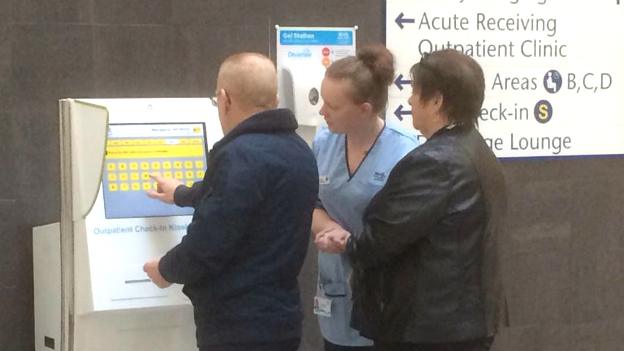Single hospital rooms - a good idea?
- Published

New hospitals are being built with single en-suite rooms
The days of the "Nightingale ward" are over. Named after the founder of modern nursing, wards containing several beds separated only by curtains are now out of favour.
Scotland's newest hospitals are being built with single en-suite rooms.
I have visited hospitals many times and have seen how, particularly in rural hospitals, there can be a great sense of camaraderie amongst patients who share the same ward for a few days. I've also been an NHS patient myself and, I have to say, was grateful for the privacy of a private room.
The debate over the pros and cons of private rooms is raging, but research carried out in a hospital in England provides some interesting answers.
In Autumn 2011, Tunbridge Wells Hospital in Pembury, Kent opened. It replaced a Victorian hospital and a former workhouse, and was the first hospital in England to contain only single-bedded rooms.
King's College London examined the experience of patients and staff both before and after the move. They looked at an admissions ward, a surgical ward, an older people's ward and a post-natal ward.
Patients reported more privacy, dignity and confidentiality in single rooms.
They felt more able to disclose sensitive information - not just to staff but also to relatives and friends who came to visit them. There were other benefits too - they slept better and no longer had the indignity of using toilets within earshot of others. In the new hospital, many patients had a nice view, and their own TV.

Tunbridge Wells Hospital was the first in England to contain only single-bedded rooms
However, immediately after the move to the new hospital, more patients started falling. Falls are a serious health risk, especially in the elderly...and staff said the key problem was visibility.
Nurses couldn't stand at their nursing station and see all their patients. When they looked down the corridor of a single-bedded hospital, all they saw were doors. Patients who were about to fall, or who had fallen, went unnoticed.
But an interesting thing happened at Tunbridge Wells. After nine months the number of patients falling returned to normal levels.
The research suggests that staff had to change the way they worked to minimise the risks. Pedometers revealed that nurses had to walk more. Hospital bosses also had to increase the number of nursing staff.
So single rooms are no magic bullet.
In the Tunbridge Wells study, two out of three patients preferred single rooms. The remaining third said they felt isolated. Men, in particular, preferred the company of others.
The response of staff was even more stark. Only about one in five preferred single rooms. The vast majority said they wanted a mix of options.
At the time, introducing 100% single rooms was a big step and, because of the research by Kings College London, we can learn a lot from it.
The architects of Tunbridge Wells Hospital welcomed the research and called for even more - and advised anyone who is building a hospital to always involve staff in the design process.
- Published24 August 2015

- Published27 April 2015

- Published27 January 2015

- Published16 December 2014
